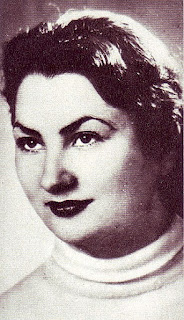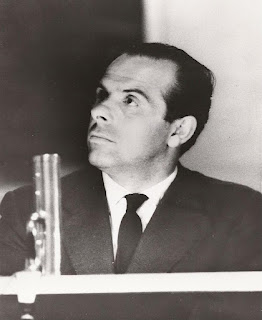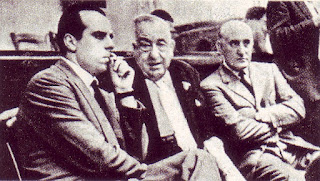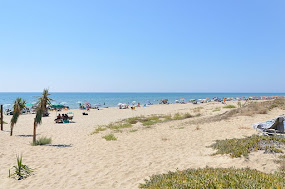Commentary on decadence of 1950s Rome saw Fellini hailed as a genius
 |
| Marcello Mastroianni and Anita Ekberg in the most famous scene from Fellini's classic |
After a preview before invited guests and media at the Fiamma cinema in Rome, the Capitol Cinema in Milan was chosen for its public premiere. The movie went on general release in Italy the day afterwards and made its London debut on 8 February. It was shown in America for the first time in April of the following year.
Directed by Federico Fellini, the film won the Palme d'Or, the highest award presented at the Cannes Film Festival in 1960 and was nominated for four Academy Awards, including Best Director for Fellini, although ultimately the production team had to be content with the Oscar for Best Costumes.
It won numerous awards in Italy, while the brilliant Nino Rota’s soundtrack was nominated for a Grammy. In America, the National Board of Review and the New York Film Critics Circle made it their best foreign film of 1961.
 |
| Federico Fellini is remembered by many as the greatest of all Italian film-makers |
It is a decade in which the city, desperate to forget the shame of Fascism and the devastation inflicted on the country by World War Two, revels in everything modern and exciting about what feels like a reborn Italy. The stars created by the country’s renascent movie industry, now joined by an influx of Americans and others, are the new gods and goddesses. Rubini, accompanied by his photographer friend Paparazzo, follows their every move.
Immersing himself in the glitzy nightlife around the capitol’s fashionable Via Veneto, the handsome, sharply-dressed Rubini himself indulges in the hedonistic pleasures on offer with only occasional restraint, much to the annoyance of his girlfriend, Emma.
But in Fellini’s story he is struggling with an inner conflict, at once chastising himself for the shallowness of his profession and his failure to make the most of his writing talent, but unable to resist the temptations of alcohol, easy sex and opportunities to behave outrageously that seem to present themselves each day.
 |
| Mastroianni became one of Italy's biggest stars |
The episode in which Anita Ekberg, cast as a visiting Swedish starlet, lures Mastroianni to follow her, fully clothed, into the Trevi Fountain, is the one for which the film is most remembered, while the name of Paparazzo has entered the language to describe any photographer who pursues the rich and famous.
Yet it has a complexity that continues to intrigue, its near three-hour duration demanding that viewers return again and again to appreciate it in all its subtlety. Fellini’s fellow director Pier Paolo Pasolini wrote that "La dolce vita is too important to be discussed as one would normally discuss a film.”
More than 13.5 million Italians paid to watch the film, attracted not least by its controversial nature. Its opening sequence, in which a gathering of bikini-clad girls interrupt their sunbathing to wave as a helicopter towing a statue of Jesus passes overhead, was condemned by the Catholic church as a parody of a second coming of Christ. In countries including Spain and Portugal it was banned for several years.
Fellini once said that the original germ of the idea for La dolce vita came from the fashion in the 50s for the so-called sack dress, a waistless garment that was tapered at the hemline but billowed out in the middle, which he imagined to represent a way in which a physically beautiful woman might conceal her moral shortcomings from view.
Others have speculated that he might have been influenced by the Montesi scandal that had reached its conclusion only two years before he began shooting. The film ends when Rubini and others are partying on a beach at dawn when fishermen haul ashore a huge, ray-like fish that had become caught in their net and died. The Montesi scandal, which linked Rome society figures to drug-fuelled orgies at a luxurious beachside villa, began when the body of Wilma Montesi, a 21-year-old woman who had gone missing in Rome the day before, was discovered lying face down at the water’s edge on a beach near the capital.
 |
| Nicola Salvi's Trevi Fountain, with the statue of Oceanus by Pietro Bracci in the centre |
The Trevi Fountain, which was symbolically turned off and draped in black after Marcello Mastroianni died, was officially opened by Pope Clement XIII in 1762. Standing at more than 26m (85 feet) high and 49m (161 feet) wide, it is the largest Baroque fountain in Rome and probably the most famous fountain in the world. It was designed by a Roman architect, Nicola Salvi, but he died when it was only half finished. Made from Travertine stone quarried in Tivoli near Rome, the fountain was completed by Giuseppe Pannini, with Oceanus (god of all water), designed by Pietro Bracci, set in the central niche. Coins are traditionally thrown into the fountain by visitors, using the right hand over the left shoulder. It was once estimated about 3000 euros were thrown into the fountain each day, money that helped feed the city’s poorest citizens.
 |
| A picture postcard from Milan showing the Capitol Cinema building |
Milan’s former Capitol Cinema was located on the corner of Via Croce Rossa and Via dei Giardini, not far from Via Manzoni and Via Monte Napoleone. Designed in the late 1930s, it was part of an imposing building that combined shops, offices and apartments. With seats for 1,350 people, it screened its first film in September 1949 and hosted many premieres, often attended by the directors and stars. The debut of La dolce vita attracted such a large crowd that windows were reportedly broken in the crush. The film was so successful it continued to be shown at the Capitol for several months. Other famous Italian films to make their public debut there included Luchino Visconti’s Rocco and His Brothers (Rocco e i suoi fratelli) and Vittorio De Sica’s La ciociara, released outside Italy as Two Women, which featured an Oscar-winning performance by Sophia Loren. Sadly, the Capitol’s popularity declined in the 1980s and it was closed permanently in 1984. Today the building houses a large clothes shop.
Also on this day:
1578: The death of portrait painter Giovanni Battista Moroni
1932: The birth of football coach Cesare Maldini
1964: The birth of football coach Carolina Morace
The Festival of Saint Agatha of Sicily















